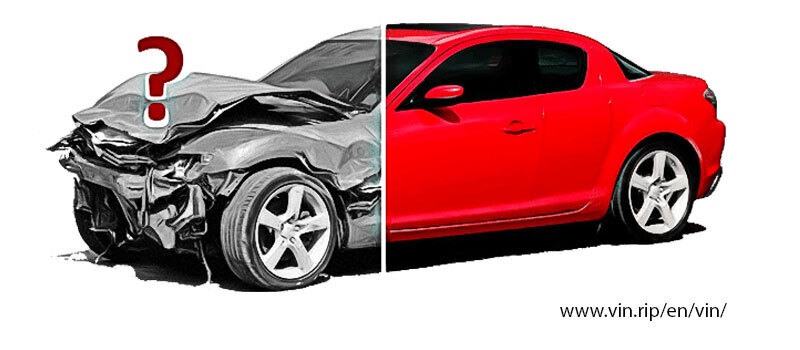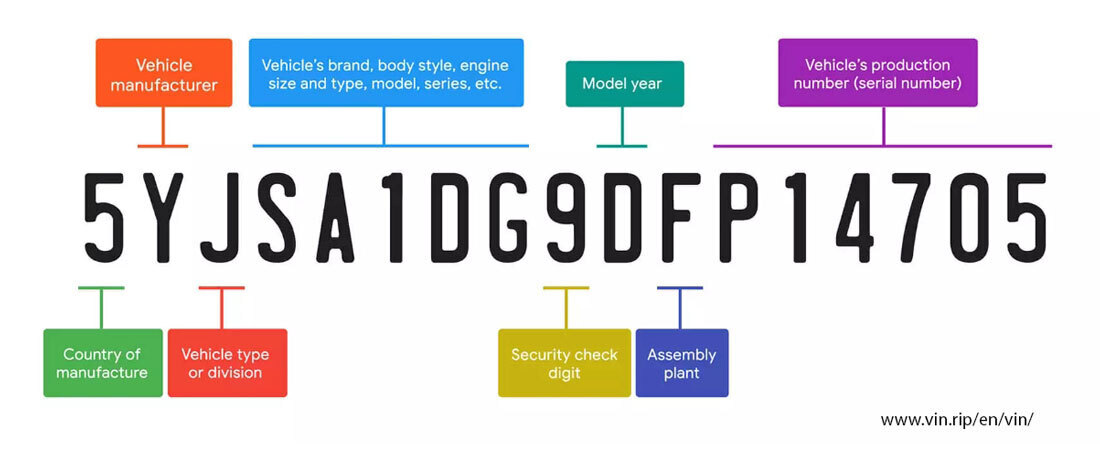
The Vehicle Identification Number (VIN), known in English as "Vehicle Identification Number (VIN)", is a 17-digit serial number that every vehicle produced has. This allows the vehicle to be clearly identified, among other things, by manufacturer or year of manufacture. Decoding the VIN number is carried out using a special VIN Decoder.
Checking the VIN number is simple: you just need to know the exact set of numbers. Usually the VIN is awarded before the start of production. To this day, the vehicle identification number is often referred to as the chassis number. This was the official name of the identification number until 1981. In the same year, the incompatible chassis number of various manufacturers was replaced by the internationally valid World Manufacturer's Identifier (VIN). Interested in knowing the complete set by VIN? A special VIN Decoder will enable you to obtain useful data absolutely legally.
Vehicle identification number structure
In order for the decoding of the VIN code to be successful, you need to know what such a number includes. Today's vehicle identification number must contain 17 digits. The VIN is divided into five blocks:
1-3 characters: World Manufacturer Code (WMI)
4-9 characters: Series, engine type, equipment
10th character: Year of issue
11th character: Place/factory of production
12-17 characters: consecutive numbering of vehicles

Manufacturer code
These are the initial numbers that allow you to check the VIN number. The World Manufacturer Identifier (WMI) consists of the first three digits of the vehicle identification number. The code is assigned by the Association of Automotive Engineers SAE International. As a rule, the world manufacturer code consists of a letter or number of the manufacturer's country and one or two digits of the manufacturer's brand.
The Association assigns codes of producing countries alphabetically or numerically:
Africa (AG)
Europe (NW)
North America (1-5)
Australia (6-7)
South America (8-0)
Specifications of the car model
Positions four through seven of the VIN contain information about the series, engine type, and equipment of the vehicle, while the corresponding vehicle model is indicated in positions seven and eight. If the vehicle manufacturer does not use all digits, this must be indicated using a placeholder character (eg "ZZZ" for Audi or VW). Knowing this data, you can easily find out the complete set by VIN using VIN Decoder.
Year of issue
The model year is entered in the tenth position. However, this is not the year of manufacture of a specific car, but the first year of a model from a continuous series. The year of manufacture of the model can be determined either by a number or by a letter. Years of issue first go through all letters, then all numbers up to and including 9, and then start again with letters. "I", "O", "Q", as well as "U", "Z" and the number "0" are excluded from the list. Especially with "0" and zero, the risk of confusion is too great.
Place of manufacture
The eleventh digit of the VIN indicates the place of manufacture or the plant of the vehicle manufacturer. It can be a letter or a number. For example, the letter "W" in this position means Wolfsburg (Germany) as the place of production of the VW car.
Sequential numbering of vehicles
The last six digits of the VIN are the individual serial number, depending on the manufacturer.
For vehicles from earlier years, the vehicle identification number may differ from 17 characters. Between 1954 and 1981 there was no universal standard. Vintage cars of the time often have shorter combinations of letters and numbers.
Where can I find the chassis number or VIN number?
The vehicle identification number is stored both directly on the vehicle and in the registration documents.
VIN on the vehicle
Previously, the chassis number was stamped on a plate in the car's engine compartment. However, it was easy to fake, which made it easier for car thieves. Since then, the vehicle identification number has usually been engraved directly into the vehicle's sheet metal, which is much more difficult to counterfeit. Depending on the manufacturer, it is installed, for example, in the door frame between the front and rear seat doors, in the engine compartment or in the boot.
Original Source of the original story >> What is a VIN number? How to VIN Decode?






